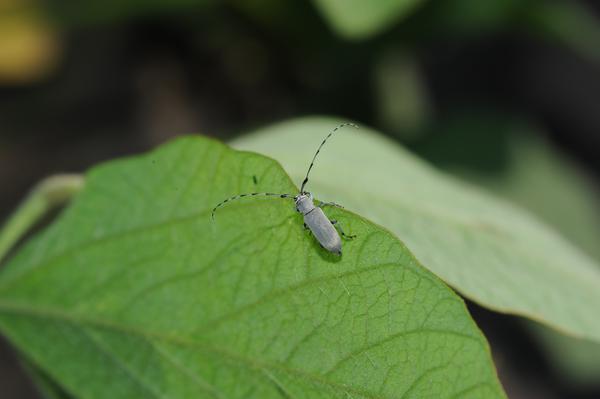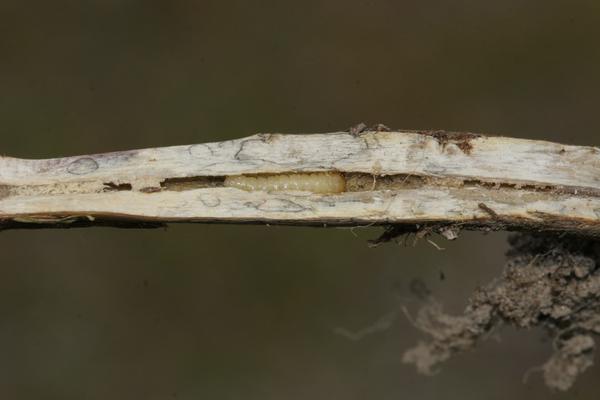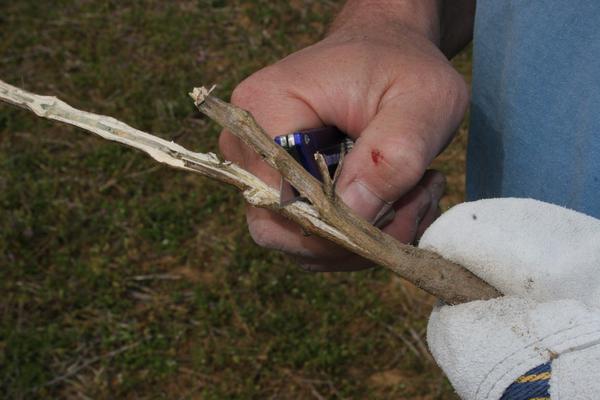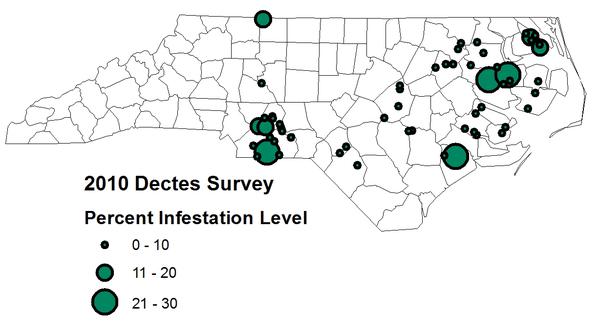Dectes Stem Borer
- Scientific Name(s)
- Dectes texanus
- Type
- Insect
- Leaf Condition
- Shiny Substance On Leaves
- Main Stem
- Internal Boring, Lodges Above Soil Surface
- Petioles Condition
- Internal Boring
- Field Distribution
- Random
- Prior Environmental
- Rain, Cool Cloudy
Dectes stem borer
Dectes sayi (Dillon and Dillon) and Dectes texanus texanus (LeConte). Family: Cerambycidae. Order: Coleoptera. It is also commonly known as soybean stem borer, sunflower stem borer, and sunflower stem girdler. Note that D. sayi (Dillon and Dillon) is generally less numerous than D. texanus. The adults if this species also tend to emerge earlier and do not persist as late in the year as D. texanus.
Biology and Identification
Adult Dectes stem borers are easily identified from their grey coloration, relatively large size (1/4 inch to nearly ½ inch long), and antennae that curve beyond the length of the body. The larvae are yellow with a dark brown head with very visible segments and can only be found in petioles or stems. This insect has one generation a year. Adults are active May through early October, but are predominately found during July and August. Females lay eggs (8-72 per female) in leaf petioles and the resulting larvae feed and tunnel in leaf petioles until they reach the 3rd instar stage. At this point, the larvae will tunnel through the petiole into the stem. Larvae will then tunnel up and down the stem. During the fall they move down the stem toward the crown near the soil to overwinter. Girdling in the stem can lead to lodging.
Feeding Injury and Damage
The primary source yield loss from Dectes stem borer is indirect from lodging. Damage to vascular tissue in leaf petioles can cause leaf abscission. There is often a visible hole from the tunnel through the petiole into the stem after this abscission. Direct yield loss from stem tunneling is not common. However, when yield loss from tunneling does occur, it probably is an interaction with other negative environmental conditions (such as drought).
Dectes stem borer is generally more abundant on field edges near weeds (like ragweed) or adjacent to last years’ soybean. Full season soybean and earlier maturity groups tend to harbor more of this pest. It’s not clear if they prefer fields with these characteristics or simply do better, but they are more common in plants with thicker stem diameters. On a regional level, Dectes stem borer is more prevalent in areas with extensive no-till (the larvae overwinter in the crown underneath the harvester cutting bar) or areas with low crop diversity and a lack of rotation away from soybeans.
Economic Threshold
There is no threshold for Dectes stem borer. Timely harvest can limit lodging. Some varieties seem to be less prone to lodging after tunneling from this pest, but there is no current way of identifying which varieties or what characteristics in the varieties reduce lodging. Using narrow rows and following the recommended seeding rate are good cultural practices to reduce impacts from this insect.
Insecticide Management
There are no effective registered insecticides for the larvae of this insect, which remains protected in the plant throughout the larval stages. While some foliar insecticides will kill adults, the long time period that adults are present in the field for oviposition (egg-laying) greatly limits any effectiveness of this tactic.






